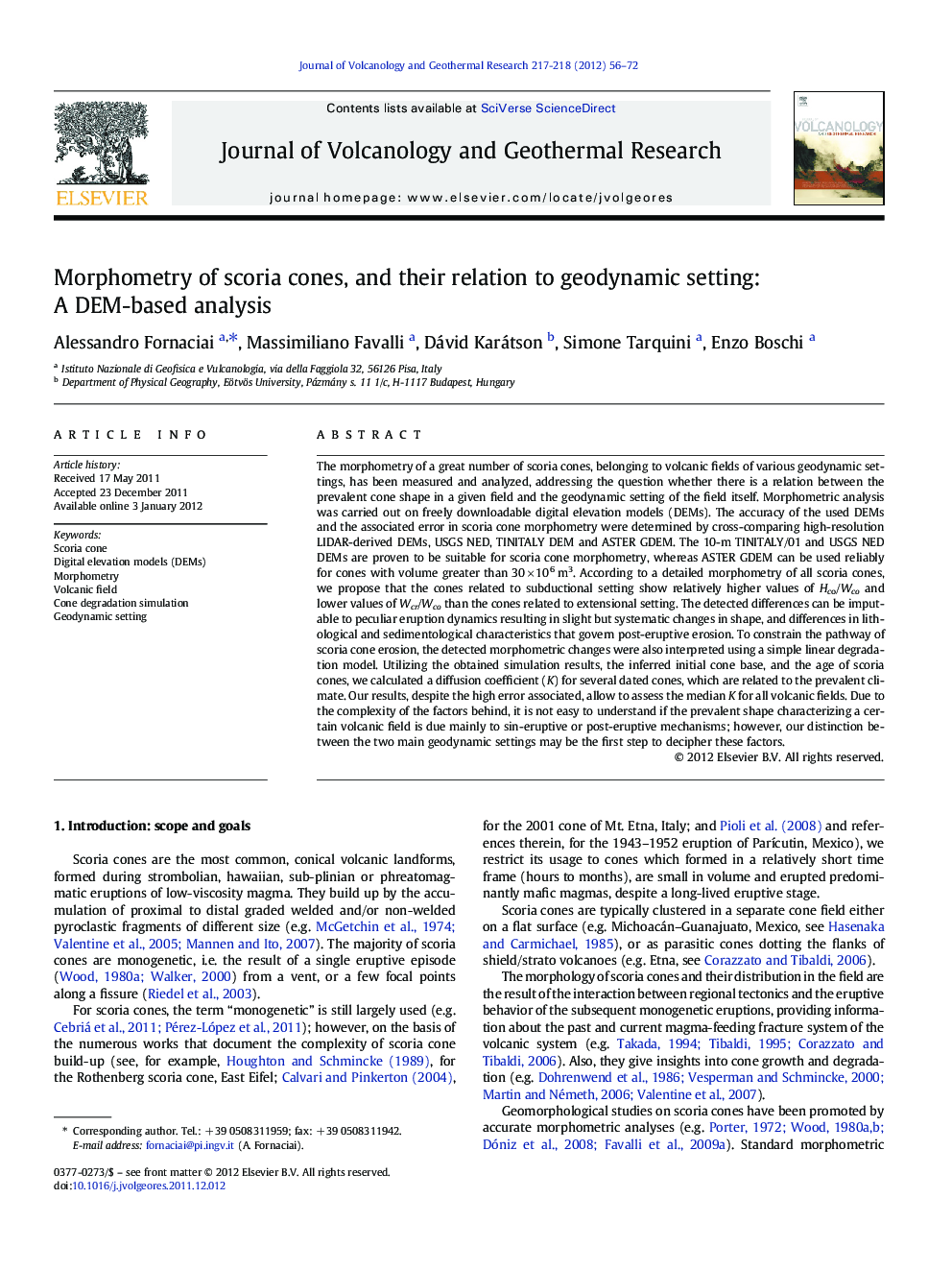| Article ID | Journal | Published Year | Pages | File Type |
|---|---|---|---|---|
| 4714976 | Journal of Volcanology and Geothermal Research | 2012 | 17 Pages |
The morphometry of a great number of scoria cones, belonging to volcanic fields of various geodynamic settings, has been measured and analyzed, addressing the question whether there is a relation between the prevalent cone shape in a given field and the geodynamic setting of the field itself. Morphometric analysis was carried out on freely downloadable digital elevation models (DEMs). The accuracy of the used DEMs and the associated error in scoria cone morphometry were determined by cross-comparing high-resolution LIDAR-derived DEMs, USGS NED, TINITALY DEM and ASTER GDEM. The 10-m TINITALY/01 and USGS NED DEMs are proven to be suitable for scoria cone morphometry, whereas ASTER GDEM can be used reliably for cones with volume greater than 30 × 106 m3. According to a detailed morphometry of all scoria cones, we propose that the cones related to subductional setting show relatively higher values of Hco/Wco and lower values of Wcr/Wco than the cones related to extensional setting. The detected differences can be imputable to peculiar eruption dynamics resulting in slight but systematic changes in shape, and differences in lithological and sedimentological characteristics that govern post-eruptive erosion. To constrain the pathway of scoria cone erosion, the detected morphometric changes were also interpreted using a simple linear degradation model. Utilizing the obtained simulation results, the inferred initial cone base, and the age of scoria cones, we calculated a diffusion coefficient (K) for several dated cones, which are related to the prevalent climate. Our results, despite the high error associated, allow to assess the median K for all volcanic fields. Due to the complexity of the factors behind, it is not easy to understand if the prevalent shape characterizing a certain volcanic field is due mainly to sin-eruptive or post-eruptive mechanisms; however, our distinction between the two main geodynamic settings may be the first step to decipher these factors.
► Accuracy of web-shared DEMs in the morphometric analysis of scoria cones. ► DEMs-derived morphometric errors assessment. ► Morphometry of scoria cones. ► Prevalent scoria cone shape in a field and relation with geodynamic setting. ► Simulation of scoria cone degradation and diffusion coefficient.
